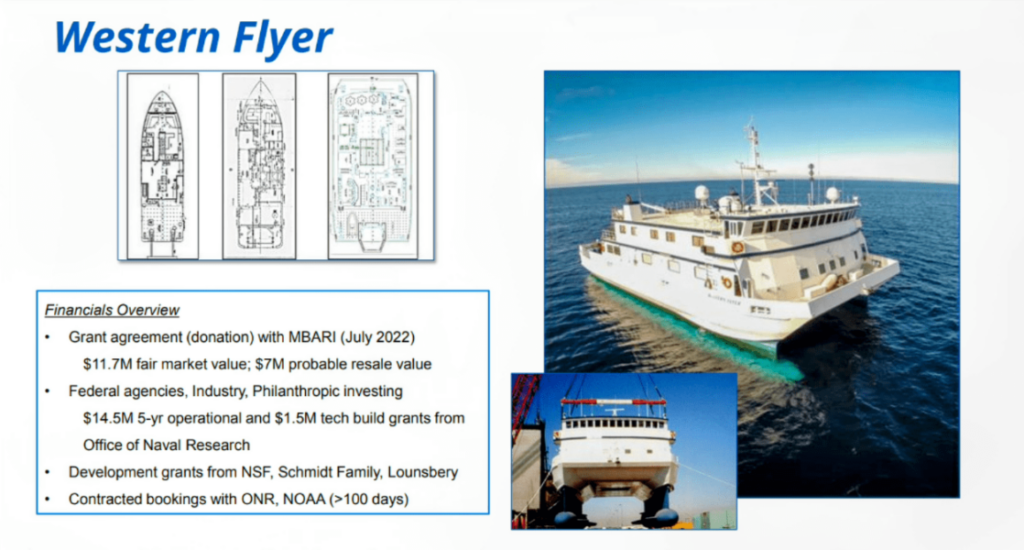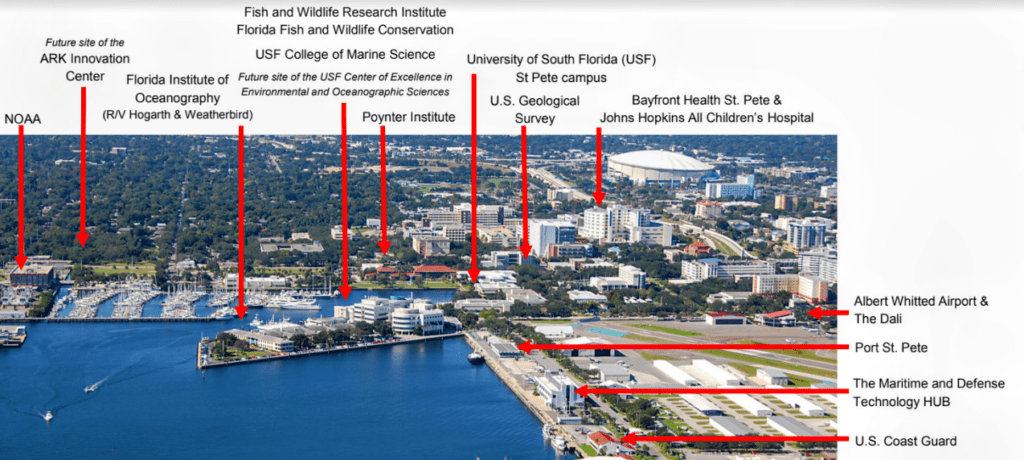USF St. Petersburg gets a bigger boat

Thanks to the generosity of the Monterey Bay Aquarium Research Institute, an $11.7 million research vessel will soon make the trek from California to its new home in St. Petersburg.
The University of South Florida Board of Trustees unanimously approved accepting the Research Vessel Western Flyer’s title during Monday’s governance committee meeting. The ship will begin its voyage from Monterey Bay to St. Pete’s Bayboro Harbor in February via the Panama Canal.
The Western Flyer will join two other research vessels at USFSP – the R/V William T. Hogarth and the Weatherbird II. Monty Graham, director of the Florida Institute of Oceanography (FIO), said that while the latest addition is roughly the same length as the previous ships, its significantly greater width provides “incredible stability.”
“So, we think this is going to be a perfect program for the vessel to bring new people who aren’t familiar with the sea into a working environment,” said Graham. “And not experience some of the unpleasantries of working at sea.”

The Western Flyer is significantly wider than the FIO’s previous research vessels, as seen in the comparison at the top of the graphic. Screengrab.
University officials entered into a grant agreement with the renowned Monterey Bay Aquarium and Research Institute (MBARI) in July to receive the 117-foot research vessel. The FIO, based at USFSP, will utilize the Western Flyer as a platform for equitable workforce development.
Graham relayed that the new ship will help increase STEM (science, technology, engineering and math) participation among historically underrepresented groups across the state and Southeast. He said that white males typically dominate those disciplines, and the FIO looks forward to increasing diversity in every aspect of the local marine workforce.
“By building support networks and creating a work mentoring program that helps people feel belonging,” he added. “To an environment which is traditionally a club. Ships themselves create clubs.”
A bevy of federal grants and contract revenue makes plans for the Western Flyer – which includes increasing faculty and student recruitment, research funding and utilizing its onboard remotely operated submersible – possible.
The grant agreement with MBARI amounts to the facility donating the ship, which Graham said has a fair market value of $11.7 million and a $7 million “probably resale value.” According to USF documents, a $14.5 million Office of Naval Research (ONR) grant supports the operation of all FIO vessels.
Graham relayed that $1.5 million in ONR funding awarded earlier this year will increase the ship’s technological capacity.
Philanthropic support provides over $200,000 for STEM programming development and implementation, and the university will cover $750,000 in transit costs through strategic investments of “carry-forward” funds.
“And we already have contracted bookings totaling a little bit more than 100 days on the Western Flyer,” said Graham. “So, we’re off and running on this vessel, and we don’t even have the vessel yet.”

A graphic showing the Innovation District’s various organizations, most of which are marine-based. Screengrab.
An onboard robotic submarine, explained Graham, can reach depths of 4,000 meters. Operators will control it remotely, and it will feature augmented reality capabilities. He said data communication would be a focal point of its system, a key aspect of the new blue economy.
Graham said the Western Flyer would directly support USF’s strategic goals of bolstering sustainability and environmental and oceanographic sciences. The FIO works collaboratively with 32 other institutions and government agencies. The St. Petersburg Innovation District is home to many of those partners, and he noted that Department of Defense researchers and contractors expressed interest in partnerships.
Officials with the Innovation District and USF – specifically, the College of Marine Science – recently announced their combined pursuit of a $160 million National Science Foundation Grant based on the region’s coastal expertise.
The FIO and MBARI will finalize the title transfer Nov. 29, and Graham expects the ship to arrive in St. Pete by early March. He relayed that the ONR will utilize some of its transit time for research and said, “we’re looking forward to generating some revenue as we’re bringing the vessel around.”
USF President Rhea Law noted university officials worked to acquire the research vessel for quite some time. However, she told Graham he needed to ensure operational financing and grants were in place before they could move forward.
“And he made it happen,” she added. “This is going to be a great thing for USF, and I’m really, really excited. Well done.”







